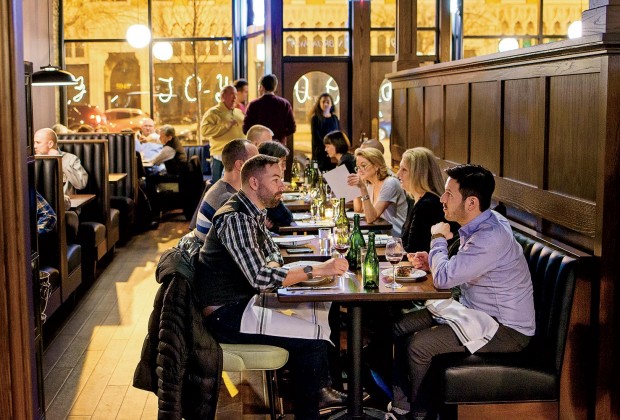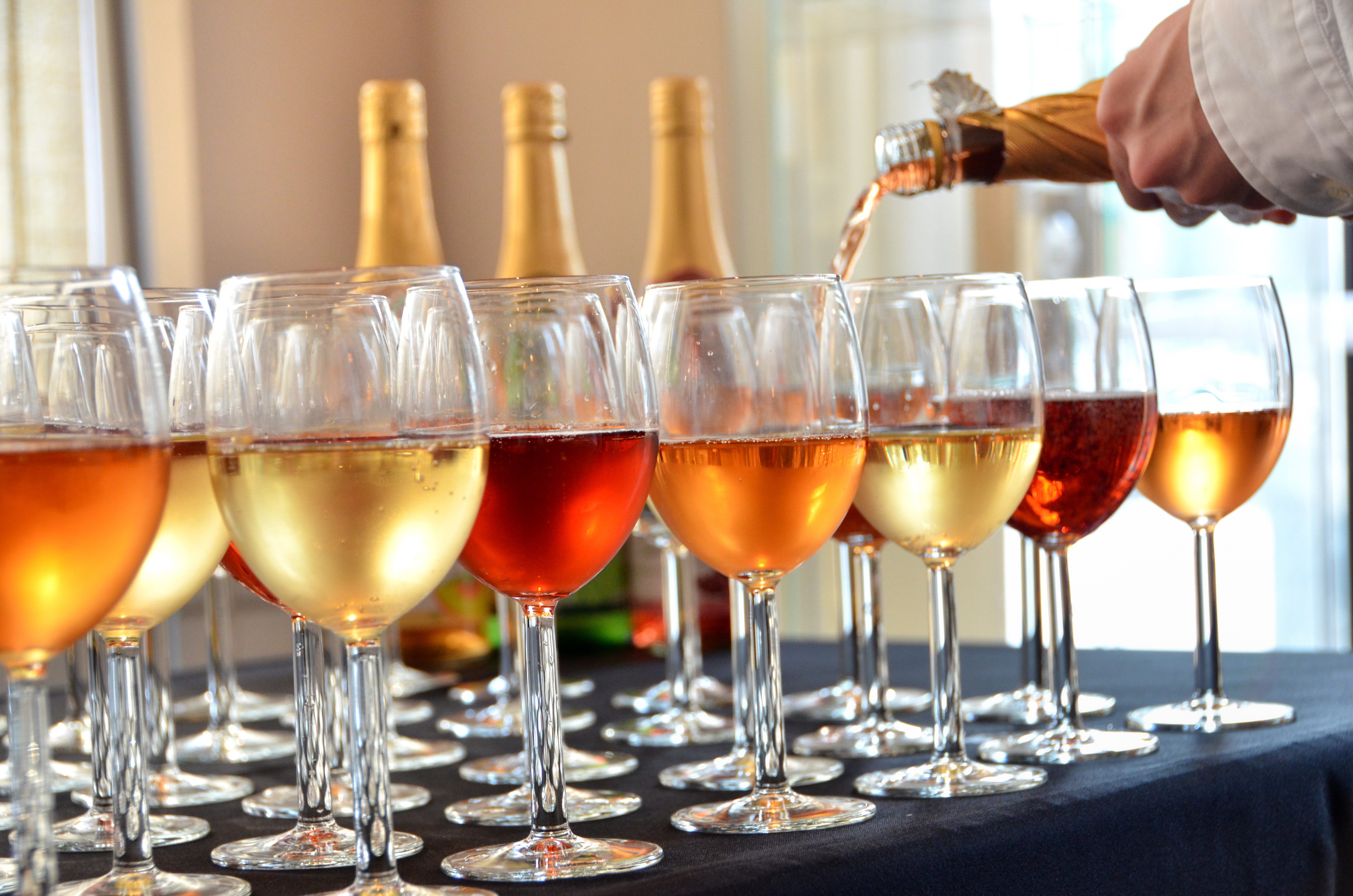In matters of wine tasting, the flight is gospel. But is it really the best way to figure out what you like or feel like drinking?
Maybe not, says Collin Moody, general manager of wine bar Income Tax in Edgewater. He’d rather we taste and compare a pair of wines side by side, if we really want to learn something.
“The flight has been communicated as the de facto way you learn,” says Moody, a veteran of local wine shops Perman Wine Selections and Red & White. “But I generally feel like the problem with sampling a lot of small bits of things is you lean towards the extremes simply because they jump out at you. Instead, we talk a lot more with customers about drinking than tasting.”
Where flights do succeed is in showing diversity. They kill many quaffable birds with one stone: You can use them to sample half a dozen different sparkling white, pink and red wines, try an increasingly full-bodied progression of European reds, or explore different geographic expressions of one grape like sauvignon blanc. (Not to mention flights are fun.)
But then there's the downside. 30 minutes later and half a bottle in, determined to vouch that this was in fact a learning experience, you try to pick your favorite for a last victory-lap glass. Which one was that again? Your ambitious, cocktail napkin note-taking apparently ended after the first pour. Maybe you’ll order that Austrian zweigelt because it was the only Austrian wine you’ve ever had. Or maybe you’ll just order the last pour of the lineup, because it was the boldest and has the most easily retrievable taste memory.
Realistically, how can you expect to recall the subtle variances or commonalities between two, let alone six wines, while also carrying out conversations about some totally unrelated topic?
“You lose sight of drinkability and subtlety,” Moody says. “There’s something about wine that rewards a quiet attention. Spending more time with something, giving it three or four ounces — a fighting chance to say something — there’s a better chance you’ll be surprised.”
This can start from anywhere. Pick an Old World– and a New World–style Merlot. Try two different wines from the same vineyard, or go for two whites from different high-altitude parts of Europe. According to Moody, it helps to compare the wines in the context of food, because so many wines we end up buying were built for food anyway.
It also helps to think about when and how you tend to drink wine at all. Do you like sipping on a full-bodied, high-alcohol New World wine all on its own, or do you tend to open a bottle of wine with dinner, when something lighter with brighter acidity plays well?
For a fun weekend exercise, hit up your neighborhood independent wine shop on Friday with your parameters in mind, then open both that night and drink them side by side over the next two days, storing them in the fridge to maximize freshness. Or you can ask for side-by-side pours at spots like French eatery Le Sud in North Center, Red & White’s bistro in Bucktown, and of course Income Tax, where a “drink your share” half-bottle program means plenty of wines are available beyond the by-the-glass options.

Moody puts me to the test, pouring a pair of Old World, cooler-climate whites: a rich, 2012 Loibenberg Riesling from Austrian winemaker Rainer Wess that tastes like juicy apple and lime, and super high-altitude Noussan Blanc du Tzanté Pinot Grigio from Italy’s Alto Adige region — a round wine with peachy, zesty notes.
He picked these two because they share similar acidity and bitterness levels, and — most importantly — a weighty texture that he compares to the tongue-coating richness you experience when an emulsified vinaigrette hits your tongue. The Riesling’s texture is heftier and longer lasting; the Pinot Grigio’s thinner, oilier and more succinct.
We then compare two stalwart French red styles: 2014 Les Trois Petiotes, a soft, juicy, merlot-dominant Bordeaux blend you might find on a bistro menu; and 2013 Domaine de Montille Bourgogne, a fresh, cherry-flavored Pinot Noir. The two somehow go together, too, each with lovely aromas — the Bordeaux’s cassis-like, the Bourgogne’s plummy — and an almost bitter finish.
“With red French wine, the question ultimately becomes: Are you more of a Burgundy or a Bordeaux person, in terms of thinking about fruit, structure, and lightness?” Moody says. I quickly realize that I could sip that bright, elegant Pinot Noir all evening long, especially with the brown butter–bathed sweetbreads I’ve just spotted on executive chef Ellison Park’s food menu.
By now it’s almost 7, and I realize I’m starving. I order the more modest grilled jarrahdale squash with pistachios, honey and chermoula, a garlicky North African herb sauce.
“Can I pour you one of the wines you tried to go with it?” Moody asks, wryly lobbing the ball into my court. My initial, wine-novice instinct is to panic. Then I pause and let my mind wander to the Noussan Pinot Grigio, and how its succulent fruit and lush textures might play off the caramelized orange-fleshed winter squash, with its bright herb topping, and mirror the creamy fat of the pistachios.
Whoa.
I may never order a wine flight again.



